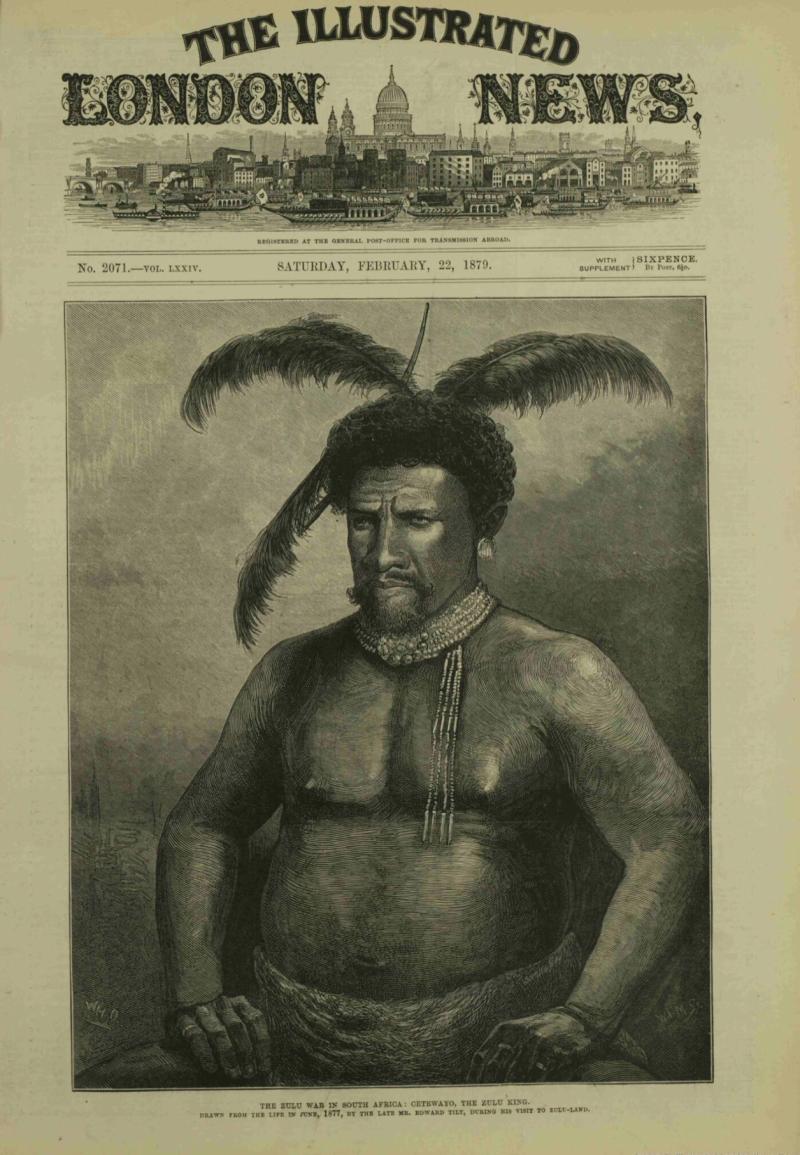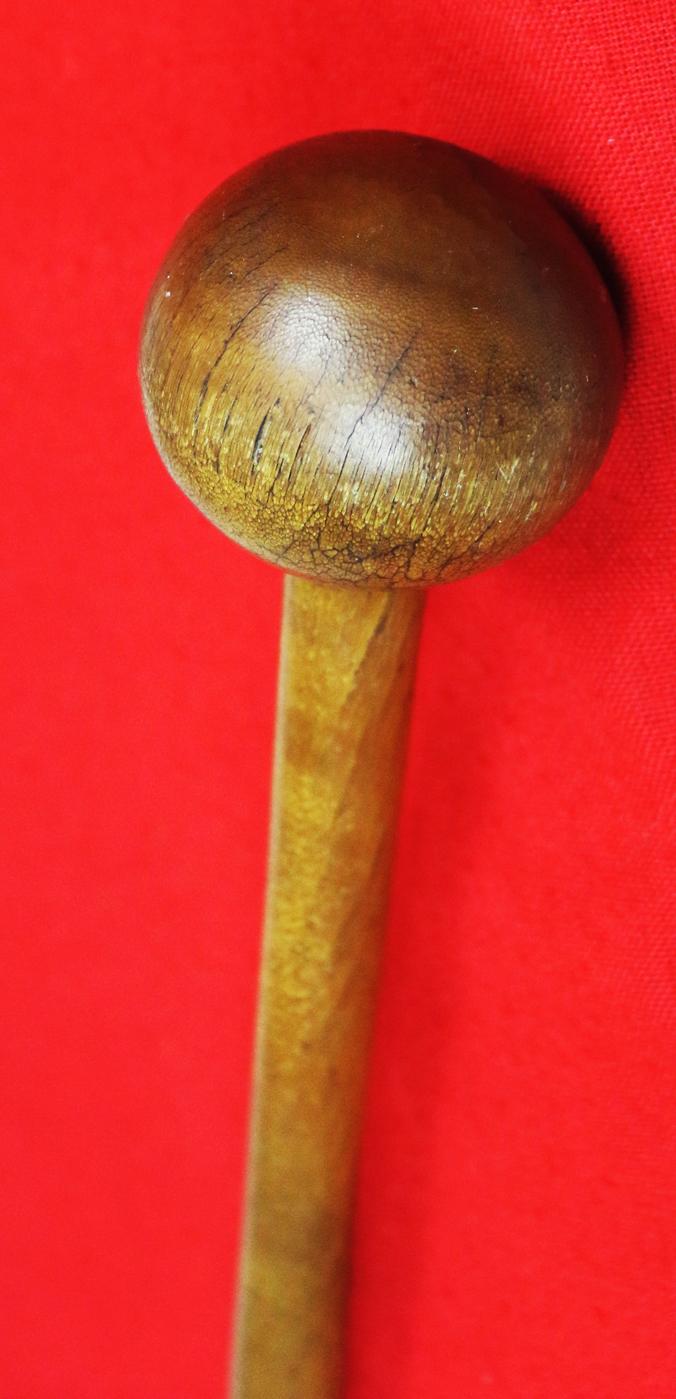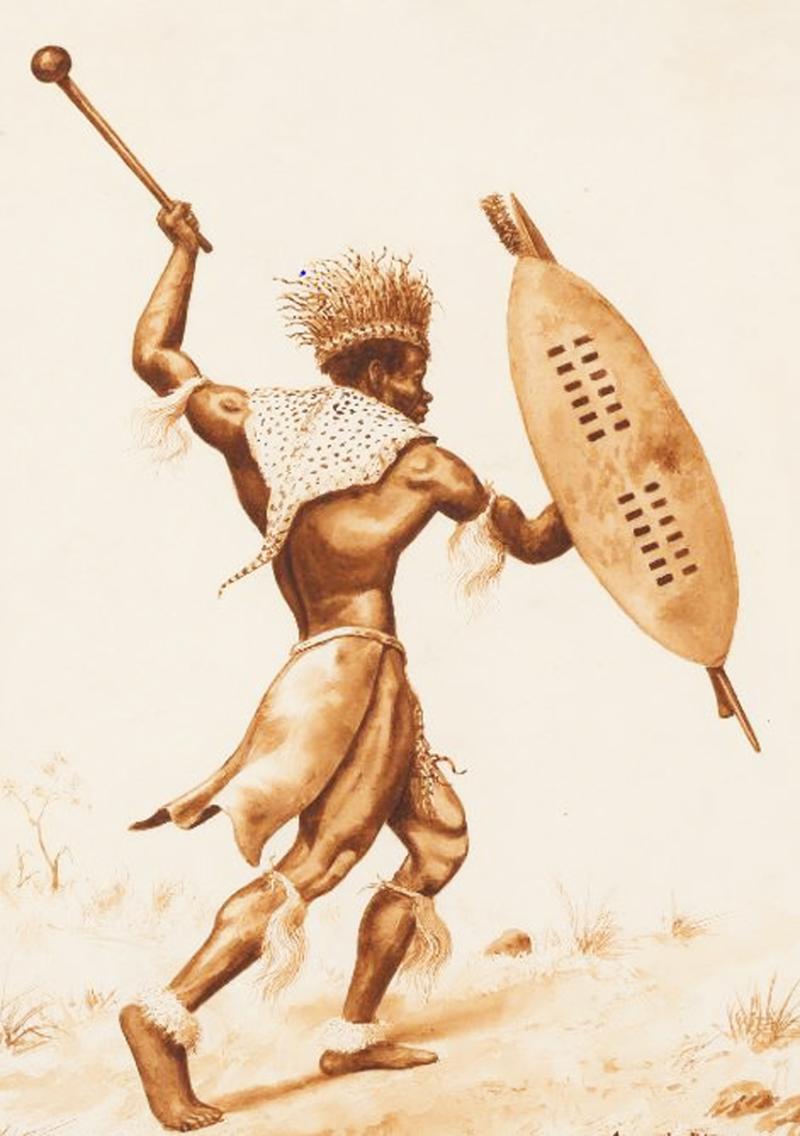An Original, Zulu War Period, Antique Zulu King's 'Prestige Sceptre', Dating For The Reign of the 1879 Anglo-Zulu War King, Cetshwayo. A Fabulous Carved White Rhino Ubhejane Horn Royal Sceptre Knopkerrie, Circa 1860's to1870
A very special item indeed, showing amazing age patination, beautiful golden yellow colouring, and for those with serious interest in original and unique Zulu War artefacts.
The Anglo-Zulu War was fought in 1879 between the British Empire and the Zulu Kingdom. Following the passing of the British North America Act of 1867 forming a federation in Canada, Lord Carnarvon thought that a similar political effort, coupled with military campaigns, might succeed with the African Kingdoms, tribal areas and Boer republics in South Africa. In 1874, Sir Bartle Frere was sent to South Africa as High Commissioner for the British Empire to effect such plans. Among the obstacles were the armed independent states of the South African Republic and the Kingdom of Zululand.
Frere, on his own initiative, sent a provocative ultimatum on 11 December 1878 to the Zulu king Cetshwayo and upon its rejection sent Lord Chelmsford to invade Zululand.The war is notable for several particularly bloody battles see below, including an opening victory of the Zulu at the Battle of Isandlwana, followed by the defence of Rorke's Drift by a small British force from attack by a large Zulu force. The British eventually won the war, ending Zulu dominance of the region.
Battle of Isandlwana; the battle fought on 22nd January 1879, at which the Zulus wiped out a substantial British force, including the 1st Battalion, 24th Foot and rocked Victorian society.
Battle of Rorke’s Drift; the iconic defence of the mission station in Natal on 22nd January 1879, by a small force of British and colonial troops; winning a record number of Victoria Crosses and inspiring Victorian Britain.
Battle of Khambula; the defeat by Colonel Evelyn Wood of a Zulu army on 29th March 1879, in the opening stages of the Zulu War.
Battle of Gingindlovu; the battle fought on 2nd April 1879, where Lord Chelmsford defeated a Zulu army on his route to overwhelming the Zulu nation at Ulundi.
Battle of Ulundi: The final battle of the Zulu War, fought on 4th July 1879, where Lord Chelmsford’s troops destroyed the army of the Zulu King Cetshwayo.
This fabulous sceptre would have been made only for the use of the Zulu king during the 1860’s and 1870’s, and would have been both prestigious and also powerful; the strength of the animal from which it was taken gave it enormous potency and therefore only a King, a great medicine man, could own it.
Sceptres with heads of this size were outlawed in the Victorian era by the government who passed a law stating that the diameter of the head had to be of a size small enough to fit into the owner's mouth. This one won’t fit in most mouths
A Ubhejane horn prestige sceptre is believed to have come from a beast in the 1860’s from Kenya from a group of white ubejane, {white rhino} now extinct. Gifted to the previous current owner by a Zulu Prince in the 1960’s, probably the most significant piece from the Zulu War we have seen. Not suitable for export
Approx 23 inches long
Sold with approval of worked item (EC Regulation 865/2006, Article 62(3) - 453-11/12. Therefore this club can be legally traded in the UK without the need for further CITES certification.
Code: 24574
Price
on
Request





